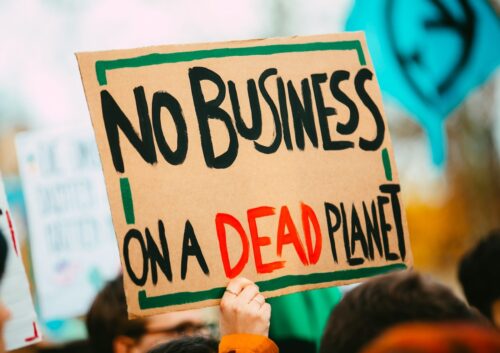
President Donald Trump last month froze billions of dollars the Biden-Harris administration was pouring out to renewable energy projects. [emphasis, links added]
Despite the widespread claim that wind and solar power are the cheapest forms of energy, the legacy media screamed that the funding freeze put renewable energy development in jeopardy.
While a federal judge temporarily blocked the order before the Trump administration rescinded it, some reports such as the one in the New York Times argued that Republican districts will be hit the hardest by Trump’s move.
This is based on data from the “Clean Economy Tracker,” which shows most of the money pouring into rural districts.
It’s not surprising that rural areas would be the location for many renewable energy projects, as wind and solar are some of the most land-intensive forms of energy.
This makes acreage-rich rural districts, whose residents tend to be conservative, attractive for renewable projects.
However, the people living in those districts have not been welcoming of the rapid industrialization of their neighborhoods.
The Renewable Rejection Database, a project of energy expert Robert Bryce, has been tracking the rejection of wind and solar projects since 2015. After a decade, the database has tallied 775 renewable energy projects shot down as a result of community opposition.
A study by Columbia University’s Sabin Center for Climate Change Law published in June concluded that local opposition is becoming the primary impediment to the renewable energy industry’s ability to build wind and solar farms across the country.
Central Control
Some states have sought to limit local control to push through projects without local ordinances and zoning restrictions blocking them.
Among the strictest is a Michigan law passed as part of its goal of reaching 100% renewable electricity generation by 2040.
Opponents have been striking at the law ever since it passed. Kevon Martis, a Michigan resident, helped organize an initiative to overturn the law, which didn’t get enough signatures to get on the ballot. …
In November, seven counties and 72 townships filed a lawsuit, arguing the Michigan Public Service Commission exceeded its authority with the rules.
Renewable energy proponents are not happy about the litigation. Heatmap, a publication that advocates for the wind and solar industry, warned that the lawsuit “threatens Michigan’s permitting reform law.”
In the November election, Michigan’s House flipped Republican, and GOP legislators filed two bills seeking to return more authority to the local governments. …
Nationwide Effort
New York and Illinois, as well as other states with 100% carbon-free energy goals, have limited local control to block community opposition from getting in the way of net-zero plans.
During its session this year, the Virginia legislature considered two bills limiting local control. The state’s lawmakers let one of the bills die before deadlines, but one more remains.
That bill, according to the Farmville Herald, removes language from state statutes that allow solar projects to be permitted by local governments.
This would effectively work like Michigan’s law, requiring local ordinances to be in line with state regulations.
Indiana has a voluntary law that provides general information about renewable development. Communities that implement policies friendly to renewable energy development receive incentive payments for projects that come online.
Some state lawmakers, however, are seeking legislation that would limit renewable energy development.
A bill in the Oklahoma legislature restricts how close wind farms can be to airports, schools, and hospitals.
A bill in Arizona would limit how close a wind farm can be to someone’s property without their consent. …
Martis said that renewable energy projects will face this kind of opposition wherever they are built, and writing laws that force “highly objectionable land uses” on communities that don’t want them is “sociopathy.”
Read full post at Just The News



















We don’t need those Bird Maiming Whale Killing Land Wrecking Eyesores Period no matter what we See Read or Hear from the Eco-Freaks many which Support Wind Energy
The main stream media is claiming that President Trump’s goal of rolling back renewable energy funding will meet resistance from his own party because a lot of those projects are planned for Red States. This article shows that many people in these states do not support such projects.